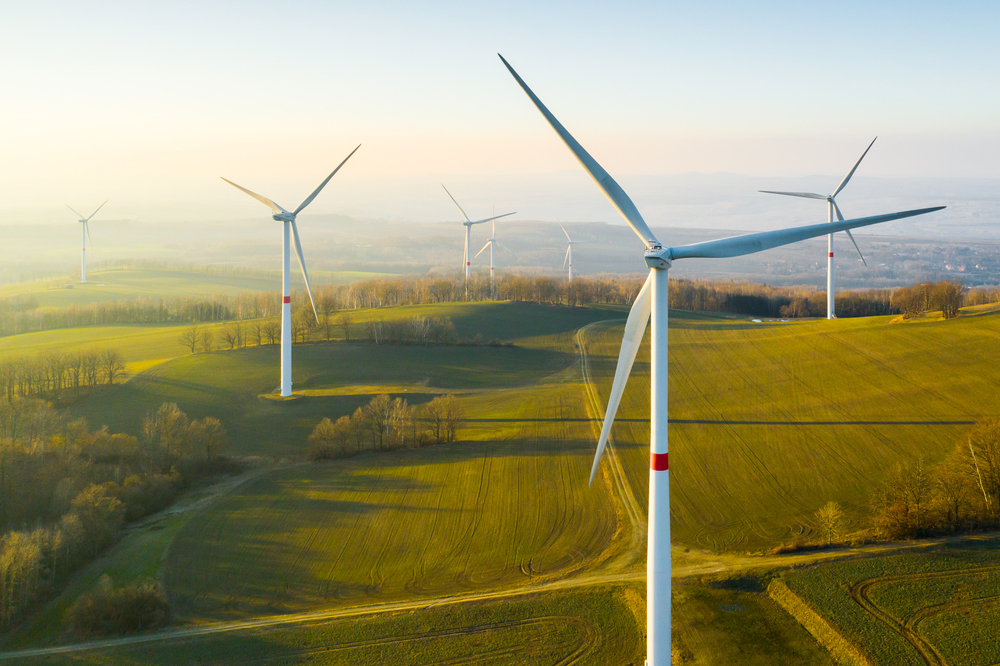
Wind turbines - © Vladimka production/Shutterstock
With the funds allocated by cohesion policy, the EU has significantly increased investments in the production of renewable energy, thus providing significant help to member states in achieving decarbonisation objectives
The European Union has set the ambitious goal of reducing its CO2 emissions to reach full climate neutrality by 2050. This aim, which would make Europe the first continent to achieve climate neutrality, however, still appears far away, and the European Environment Agency recalled that although emissions are decreasing, the EU is lagging behind on the roadmap regarding the 2030 medium-term objectives.
Energy production in the European Union
By observing the data provided by Eurostat on the availability of energy in the EU depending on the type of source, it is possible to note that in the EU approximately 70% of energy is still produced by fossil energy sources, such as coal, gas and oil, although in recent years renewable sources have increased, going from 4.8% in 1990 to 18.1% in 2022. Among the various member states of the Union, only Estonia produces the absolute majority of its energy needs through renewable sources, with approximately 62.9%.
According to a recent study, the EU would have the possibility of producing an additional 12,500 terawatt hours per year through renewable sources, equal to 78% of the Union's total energy in 2022 and higher than what is produced from fossil fuels. In particular, the rural areas of countries such as Spain, Romania, France, Portugal and Italy offer significant opportunities for the expansion of renewable energy production. For example, ground-mounted photovoltaic systems in these regions could significantly contribute to achieving the EU's photovoltaic targets.
Given the increasingly pressing need for Europe to abandon fossil fuel sources, both to achieve medium and long-term environmental objectives and to free itself from dependence for fossil fuel supplies on non-European suppliers, often governed by non-democratic political regimes, the EU and its members need huge funding in the coming years.
Cohesion funds for renewables
To support the energy transition, the EU has allocated significant funding through its cohesion policy, amounting to over 118 billion Euros for the 2021-2027 programming period. This funding is specifically targeted at climate action and renewable energy projects, in line with the EU's broader commitment to the European Green Deal, and has significantly increased compared to the past.
In fact, if in the financial planning period 2014-2020 the EU had allocated around 5.9 billion Euros only for the installation of renewable energy production plants, in the seven-year period 2021-2027 the funds available have almost doubled and amount to over 10 billion Euros. Of these, approximately 4.6 billion Euros, or 45% of the total funds for renewables, will be invested in installations capable of generating solar energy. Other sources of renewable energy financed include wind energy, biomass, marine energy and other types of renewable energy including geothermal energy.
Among the various member states, however, resources are distributed very differently.
The country that receives the most funding for the production of renewable energy is Spain, with almost 2.8 billion Euros, followed by Poland, with just over 2 billion, and Italy, with more than 970 million Euros, including 701.3 million Euros only for the installation of photovoltaic systems. The countries that will receive the least funds will be Sweden (3.3 million), Luxembourg (4.7 million) and Malta (6.6 million).
These funds have already been directed in the past to the development of renewable energy infrastructure, including transmission and distribution networks, storage facilities and the creation of wind farms, solar plants, biomass plants and other environment-friendly energy initiatives. Member states will have to ensure that the funds are used completely.
This content is published in the context of the "Energy4Future" project co-financed by the European Union (EU). The EU is in no way responsible for the information or views expressed within the framework of the project. The responsibility for the contents lies solely with OBC Transeuropa. Go to the "Energy4Future"






 To Top
To Top